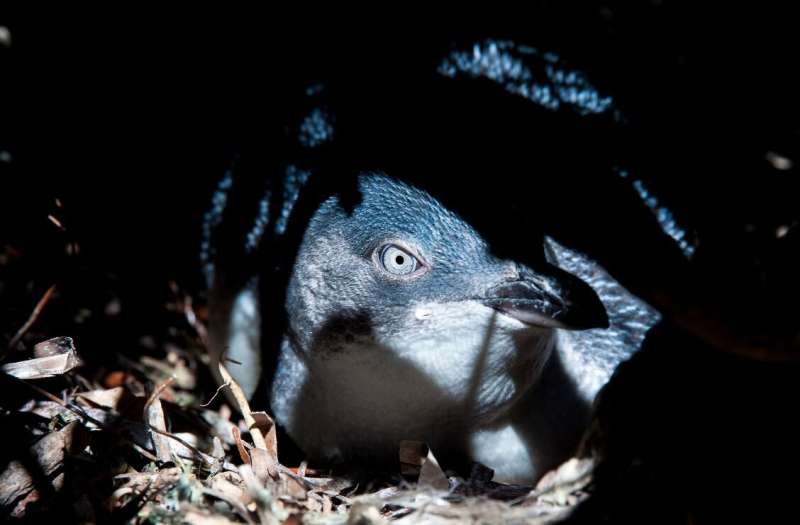
The latest floods have drowned out memories of drought in many parts of Australia, but ecosystems and native species are still battling with the effects of drought and bushfire.
Now a new Flinders University study has found a strong link between the major impacts of the Millennium Drought (2001–10) and a South Australian little penguin (Eudyptula minor) colony which is perilously verged on the edge of survival.
Freshwater river inflows affected by the 10-year drought earlier this century had a major impact on the little penguin population's main fish food source, with the Encounter Bay population also doing battle with human interference and other impacts of climate change.
The current Granite Island population has fallen to only 20 adults while all other populations in Encounter Bay are now extinct, says Flinders University expert Dr. Diane Colombelli-Négrel, who coordinates annual census counts of numbers on Granite Island in Encounter Bay, south of Adelaide.
"The fact that the Granite Island little penguin population still had not recovered in 2020—after larger river outflows in 2012–13 and at the end of 2016—suggests that the population may have reached some critical reduction in the number of breeding birds during the drought period," a new article in Frontiers in Marine Science states.
The study found a strong association between little penguin numbers, the river outflow and one of their main local food sources, southern garfish, and suggests that ocean warming and other factors—such as predation and low juvenile survival—could also have contributed.
Little penguins are colonial seabirds that become central-place foragers during breeding, with most of their prey being captured within less than 60 km of their colony when feeding their chicks.
The coastal and estuarine environment at Victor Harbor's Encounter Bay, the Lower Lakes and Coorong depends on regular outflows from the mouth of the River Murray, which regularly closes during periods of drought.
"Given droughts are becoming more and more frequent, future studies are needed both within Australia and elsewhere to identify which species may be affected by hydrological droughts (including) for seabird conservation and river management," researchers conclude.
"The results of this study suggest that decisions regarding river water management should consider not only human and terrestrial environmental requirements, but also the long-term impacts that this may have for the coastal environment outside the river system."
Researchers also called for:
- Detailed studies to assess the diet and habits of long-nosed fur seals which compete for food in the area—and on the impacts of commercial fishing of southern garfishes and other food sources.
- Monitoring of coastal waters' sea surface temperatures and chlorophyll-a concentrations alongside rainfall and freshwater river outflows to support seabird and other marine life.
- Checks on effects on larval fish and predators numbers after increased nutrient loading from freshwater outflows raise phytoplankton and zooplankton production near river estuaries.
- Long-term impacts of coastal productivity after the average annual outflow at the location now ceasing to flow to the Murray Mouth 40% of the time compared to 5% before increased extraction for human use occurred.
Explore further
Citation: Little penguins' food struggles (2022, June 20) retrieved 20 June 2022 from https://phys.org/news/2022-06-penguins-food-struggles.html
This document is subject to copyright. Apart from any fair dealing for the purpose of private study or research, no part may be reproduced without the written permission. The content is provided for information purposes only.
June 20, 2022 at 08:05PM
https://phys.org/news/2022-06-penguins-food-struggles.html
Little penguins' food struggles - Phys.org
https://news.google.com/search?q=little&hl=en-US&gl=US&ceid=US:en

No comments:
Post a Comment